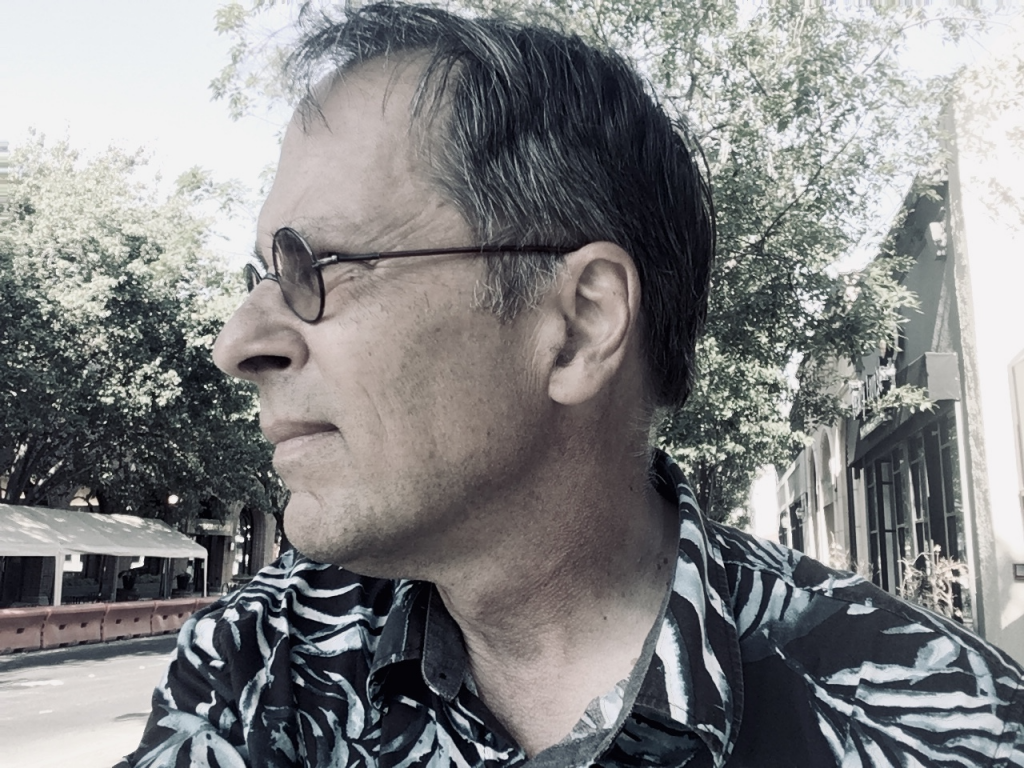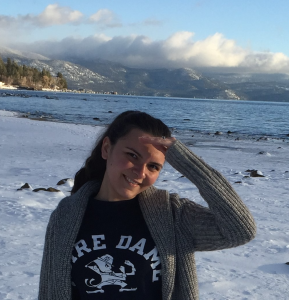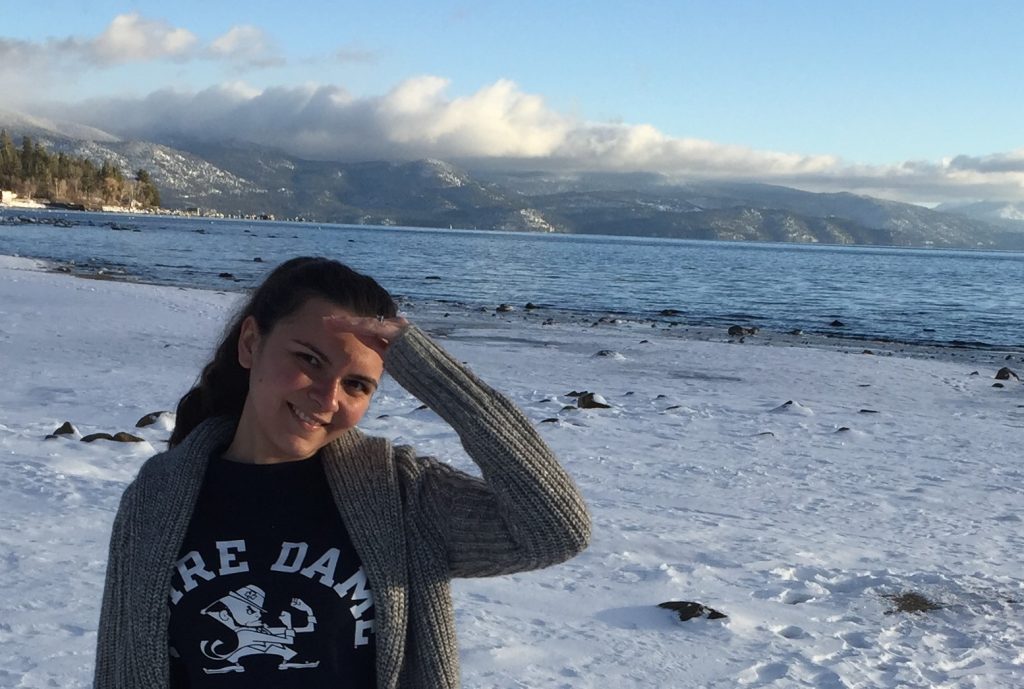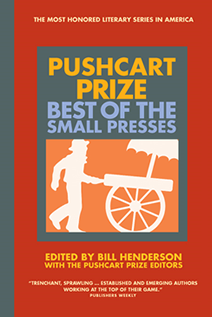
NER staff reader Evgeniya Dame talks to Rob Ehle, author of “A Bus as Big as a Bus,” about children as protagonists, striking the balance between funny and sad, and the importance of sharply focused curiosity.
Evgeniya Dame: There are two wonderful things going on in your story—it takes us into the mind of an eleven-year-old boy and in a smart, understated way it engages with one of the greatest, most enigmatic works of existentialism, The Stranger by Albert Camus. What came to you first? Was it the desire to write a story in Joe’s point of view or to create a commentary on Camus’s novel?
Rob Ehle: I wrote this story a long time ago. It was actually a sort of assignment for a reading at Litquake, the San Francisco fall literary festival, and the theme was “Failure to Commit.” I don’t remember how I got to be part of a group of writers much more accomplished than I. I just remember that a failure to commit felt like one of the central themes of my own life. As the deadline loomed, I realized that not getting assignments done on time was as good an example of that as any. Once that thought came to me, the first page wrote itself—just as the first page of a school assignment could, once I finally got the idea. And just as in school, I hadn’t completed the full story by the night of the reading. Anyway, each of us only had five minutes that night to read, so I didn’t really need to have it finished.
The Stranger came to me because I had recently reread it, and remembering my consternation the first time I’d done so, I started thinking about what it would be like if a very young person read it. The difference would be that the kid would feel no need in an essay or book report to disguise his complete bafflement and boredom. I don’t think there’s much of a parallel between Joe’s story and Meursault’s in The Stranger. Unless, I suppose, it’s that there’s a point somewhere around fourth or fifth grade where the universe appears disturbingly indifferent to a certain kind of kid.
ED: Do you often read fiction written from a young person’s point of view? What kind of things ring true to you (or not)?
RE: I don’t know if I read it more often than anyone else. Classics like Huckleberry Finn, or some of the Faulkner stories—“The Bear” comes to mind, The Reivers; in contemporary fiction, there’s The Curious Incident of the Dog in the Nighttime, and certainly Jesmyn Ward’s Salvage the Bones. What all this writing has in common, of course, is young people’s experience being treated with as much curiosity and seriousness as adults’. Their problems and challenges are often—at least for middle-class white kids—simple; but for the child, the problem is always new, and therefore always huge. In the case of Jesmyn Ward’s characters, the problems really are huge—for anyone, no matter what age—and that’s another layer, but the point is that a child’s perspective can often distill the confusion and despair and delight common to any life. There’s a difference between distilling experience, though, and just using an innocent’s perspective for easy emotion. Whether it’s one or the other in any particular story is what people will argue over.
ED: While Joe’s struggle with his reading is the center of the story, I loved the quiet background drama—the tension in his parents’ marriage, glimpses into Nathan’s home life, and the growing chasm between the two boys. How do you approach secondary characters in your work?
RE: I think it’s obvious that one first of all—in psychological realism, anyway—gives secondary characters as much effort in the telling as one does a primary character. I mean, that person isn’t going to get as many brushstrokes, but the ones s/he gets are going to have to be deft. I don’t know if in your own writing you’ve ever had the experience where there’s a character you’d thought of as secondary in the beginning eventually becoming a primary character in their own right, but it can happen now and then. And if sometimes it just means the story’s become ungainly, other times the current has actually found a different course. That opening up of possibility, unpredictability, which is the strength of a good story, comes partly from rendering each character with sharply focused curiosity.
ED: Could we talk about the tone of this story? It’s incredibly funny, but there is a darker tone underneath, especially once Joe begins to realize that the rules of his life have changed and things may not turn out for the best, either at school or at home. Then there is the emotional moment at the end between Joe and his mother. Do you find yourself drawn to his balance of the comic and the tragic, and how do you know when the combination is just right?
RE: Comedy gives a breeze to a story and moves it along. For better or worse, when people’s attention these days starts to flag at the 241st letter, elements like humor take importance in just keeping readers’ eyes on the page. Some people bemoan this, and for the most part I’m with them. I don’t usually write stories with quite this many laughs per line. I expect some of the tone is due to the fact that, initially, I knew I was going to be reading aloud to a crowd of folks in a bar.
On the other hand, there’s an interesting balancing act in writing about kids: they’re naturals for comedy, but they can also seduce a writer into sentimentality. And of course, as I said, their experience can sometimes distill the human condition: their challenges are magnified because it’s the first time they’re being experienced. I remember breaking something once at a summer day camp, and trying to figure out how I was going to live on nuts and berries after I ran away to live in the woods for the rest of my life. A fugitive from justice. I think I was eight. That’s a funny story, but not at all funny in the moment. There are so many times before you’re even ten years old that you are terrified or desolate. Even the most carefree child. For myself, I’m not usually thinking about balancing the comic and the serious. I’m thinking about what life is like. And if you render that truthfully, the comic and the serious and occasionally the tragic are all there.
ED: Present throughout the story is a subtle dissatisfaction—cynicism, perhaps—with the way schools promote reading habits. Were you yourself a “mathy skateboard carnivorous plant person” like Joe once? How do you think engaging with literature really happens for children?
RE: That description of Joe’s book report assignment on the first page is almost verbatim an assignment my son had when he was Joe’s age. It was given by a teacher who wouldn’t have been able to write her own way out of a paper bag. Frankly, she was probably a mathy person, but she had to cover the full curriculum, so. My son’s best reading teacher was the one who had everyone start the day reading anything they liked—story books, comics, skate magazines, whatever. She told parents how much her own father had hated reading as a child—or said he did, even though he gobbled up comic books. One would hope a child might grow up to read more than comics, but if you can’t get them to look forward to reading in the first place, they’re not going to read anything. I hope I’m not cynical about reading education, but it’s true it can be done well or poorly. I wasn’t particularly mathy, but unlike many adult writers, I wasn’t an especially voracious reader, either. My sister was “The Reader.” I was hanging with friends, riding my bike, watching television, drawing . . . and reading when there was something worth my time. Which for some reason was less often for me than for my sister.
ED: As an art director for Stanford University Press, you design book covers, and you are also a photographer. How does this interest for the visual coexist with the writer in you?
RE: My sister was The Reader (and writer), and I was The Artist. I’d draw dinosaurs, horses, planes, would copy cartoon characters, etc. My enthusiasms evolved, though, and I was an English major in college. Many years later, I sort of slipped into book design through the back door—as many people do, actually. It’s too long a story. I will say that in scholarly publishing, I find design more fun than editing, which I have never done, and which has never tempted me (all due respect to scholarship). I’ve done surprisingly little interior book design over the many years I’ve been working at the Press. The most significant has been the Pritzker Edition of The Zohar, the body of medieval Jewish mystical scripture upon which Kabbalah is based. I put the page numbers in the middle of the outside margins, that was the extent of my creative contribution pretty much. I’d like this feature someday to be referred to as “the Ehle folio.” Except I don’t think I was the first to think it up. I’ve done hundreds of cover designs, maybe thousands by this point. It’s not quite as glamorous as it sounds when you’re doing them for books about the Brazilian hemp trade from 1847 to 1863, and you know they’re going to sell only a few hundred copies, but as I say, it’s still fun. And the best thing is that my head isn’t filled with anyone else’s prose when I sit down to write.
ED: What are some of the projects you are working on right now?
RE: Other stories, certainly, and I’m writing a historical California novel that begins with two boys and a mastodon.
ED: Thank you very much!

Evgeniya Dame, a fiction reader for NER, is a Fulbright scholar and a 2020–2022 Wallace Stegner Fellow in Fiction at Stanford University. Her fiction appears in Ploughshares, Subtropics, Southern Review, and Joyland. Her nonfiction and interviews have been published in Electric Literature and New England Review online. She grew up in Samara, Russia, and currently lives in Northern California.


